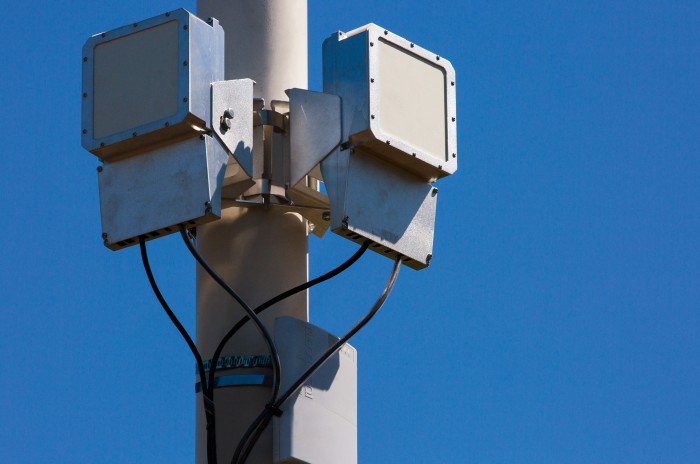Facebook Is Testing a Super-Speed Public Wi-Fi System
Google has spent several years building out high-speed fiber-optic Internet services in several U.S. cities. Now Facebook is developing technology to deliver broadband at similar speeds over the air.
The social network has built a small prototype wireless network on its campus in Menlo Park, California, that can serve data at speeds of over one gigabit per second—matching the speed of Google Fiber and nearly 100 times that of the average U.S. broadband connection. Facebook will start operating a larger-scale test network in downtown San Jose later this year, and similar trials will take place in other cities around the world.
“We’re going to be able to use this high-capacity urban Wi-Fi solution to bring more people online affordably,” said Jay Parikh, head of infrastructure and engineering at Facebook, at the company’s F8 conference today.
Parikh said that fiber networks like Google’s are too difficult and expensive to roll out in urban areas for them to reach every city dweller, even in most developed countries. Wireless infrastructure should be cheaper and easier to deploy, he says.
Facebook’s project, dubbed Terragraph, is built around an emerging wireless technology called WiGig, which is being developed for future gadgets from companies such as Samsung, Intel, and mobile chipmaker Qualcomm (see “A Speedy Wireless Protocol Is Coming to Many Gadgets”).

Facebook wants to blanket urban areas with WiGig signals from equipment mounted to light poles and other street furniture. The network could directly serve mobile devices and provide connections to buildings, or provide a high-capacity backbone for conventional Wi-Fi and cellular networks.
WiGig is similar to Wi-Fi in that it operates in radio bands that aren’t controlled by any one company, unlike cellular networks. But the 60 gigahertz radio waves that WiGig uses are capable of packing in more information. The standard is also designed in a way that makes it more reliable. Facebook built its test network using commercially available WiGig equipment.
Ben Zhao, a professor of computer science at the University of California, Santa Barbara, says that Facebook’s design makes sense. But for it to work properly at scale, the company’s WiGig antennas will need to track the devices they are serving as they move around or disappear behind obstacles such as buses very accurately because the 60 gigahertz beams are very focused.
“Doing this in real time robustly for any street environment is very challenging,” says Zhao, whose lab has collaborated with Facebook on other wireless technology projects.
Facebook doesn’t plan to make money directly from its new wireless technology. Instead, it will offer the plans for free in the hope that telecommunications companies will pick them up. “We want to show that it’s possible to build networks to accelerate how people get connected to the Internet,” says Parikh.
Facebook has both altruistic and profit-seeking motivations for that. The company’s leader, Mark Zuckerberg, professes a desire to help poor countries develop faster by widening Internet access. But broadening access to high-speed broadband will boost the company’s various revenue-generating products.
High-speed Internet access could be important to Facebook’s ambitions to make virtual reality a popular and powerful platform, for example. Virtual-reality video streams are bulky because they need to cover every place a person wearing a headset might turn his or her head. As Facebook and other companies increase the quality of their virtual reality headsets to boost realism, the size of the video files they consume will also increase.
Keep Reading
Most Popular
How scientists traced a mysterious covid case back to six toilets
When wastewater surveillance turns into a hunt for a single infected individual, the ethics get tricky.
The problem with plug-in hybrids? Their drivers.
Plug-in hybrids are often sold as a transition to EVs, but new data from Europe shows we’re still underestimating the emissions they produce.
What’s next for generative video
OpenAI's Sora has raised the bar for AI moviemaking. Here are four things to bear in mind as we wrap our heads around what's coming.
Stay connected
Get the latest updates from
MIT Technology Review
Discover special offers, top stories, upcoming events, and more.